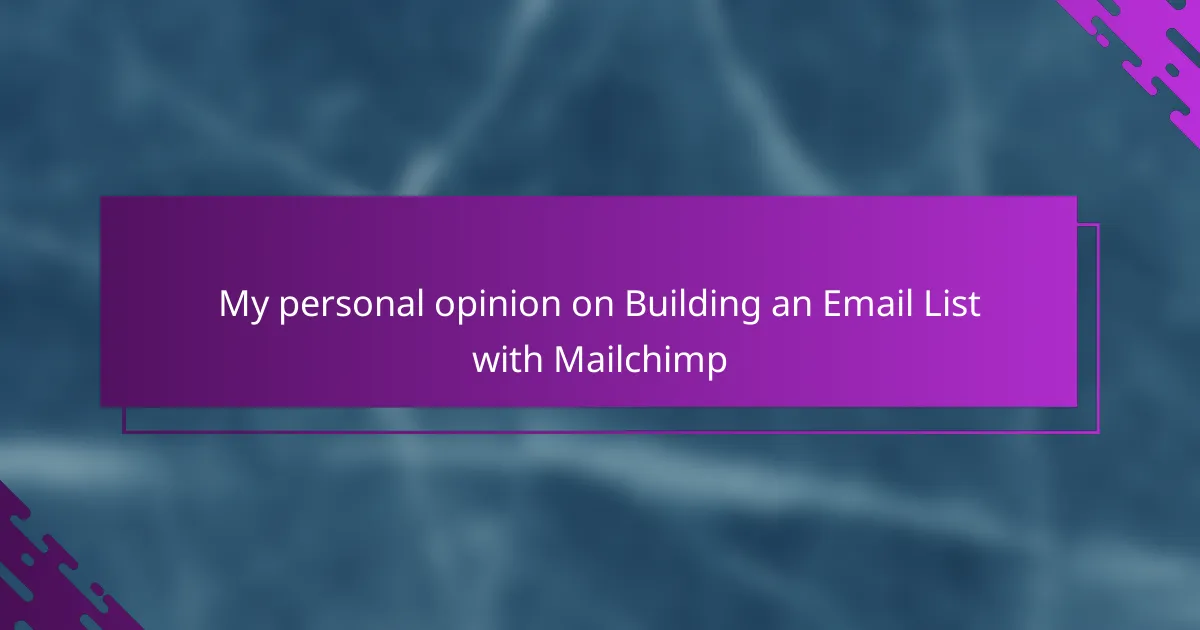Key takeaways
- Building an email list fosters genuine connections with readers, offering a sense of ownership over your audience compared to social media.
- Mailchimp simplifies the email list creation process and boosts confidence in users through its user-friendly features.
- Effective signup forms should be simple and visually aligned with your brand to encourage higher signup rates.
- Strategies like segmentation and automated welcome emails enhance personalization and engagement with subscribers.
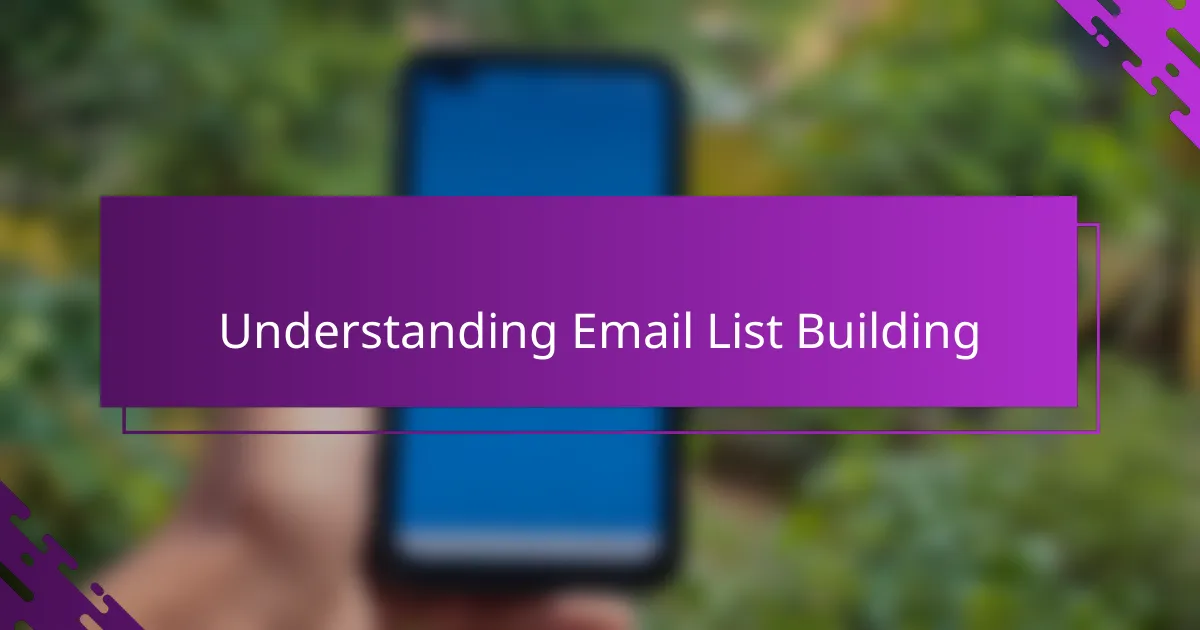
Understanding Email List Building
Building an email list, to me, is like creating a small community of readers who genuinely want to hear from you. It’s more than just collecting addresses; it’s about forming real connections. Have you ever felt that thrill when someone opens your email and reads what you’ve poured your heart into?
I remember when I first started, the idea of email list building seemed daunting. But slowly, I realized it’s about trust – people trusting you to share valuable content regularly. Don’t you find it rewarding when someone replies or engages through your emails? That’s the real magic right there.
What struck me most is how email stands out compared to other platforms. Unlike social media, where posts get buried in feeds, an email lands directly in someone’s inbox, waiting to be discovered. Isn’t that a powerful feeling, knowing your message is right there, personal and direct?
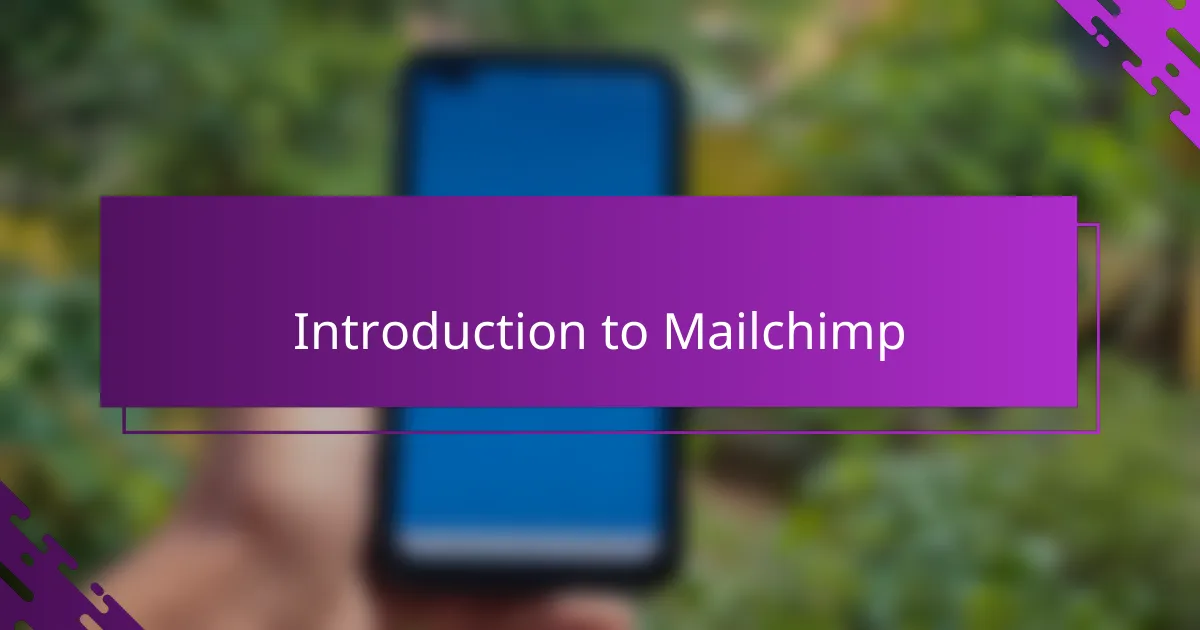
Introduction to Mailchimp
Mailchimp quickly became my go-to tool when I started diving into email list building. What I love about it is how it simplifies a process that once felt overwhelming. Have you ever opened a platform and wondered, “Where do I even start?” With Mailchimp, the learning curve felt surprisingly gentle.
One thing I appreciate is how Mailchimp balances power and ease of use. You don’t need to be a tech expert to design beautiful emails or organize your contacts. I remember feeling proud the first time I sent out a campaign that looked professional without hours of fussing over details.
But more than the features, Mailchimp gave me confidence. It’s like having a reliable partner by your side who helps you nurture those connections I talked about earlier. Don’t you think having that kind of support makes email list building less intimidating—and even enjoyable?
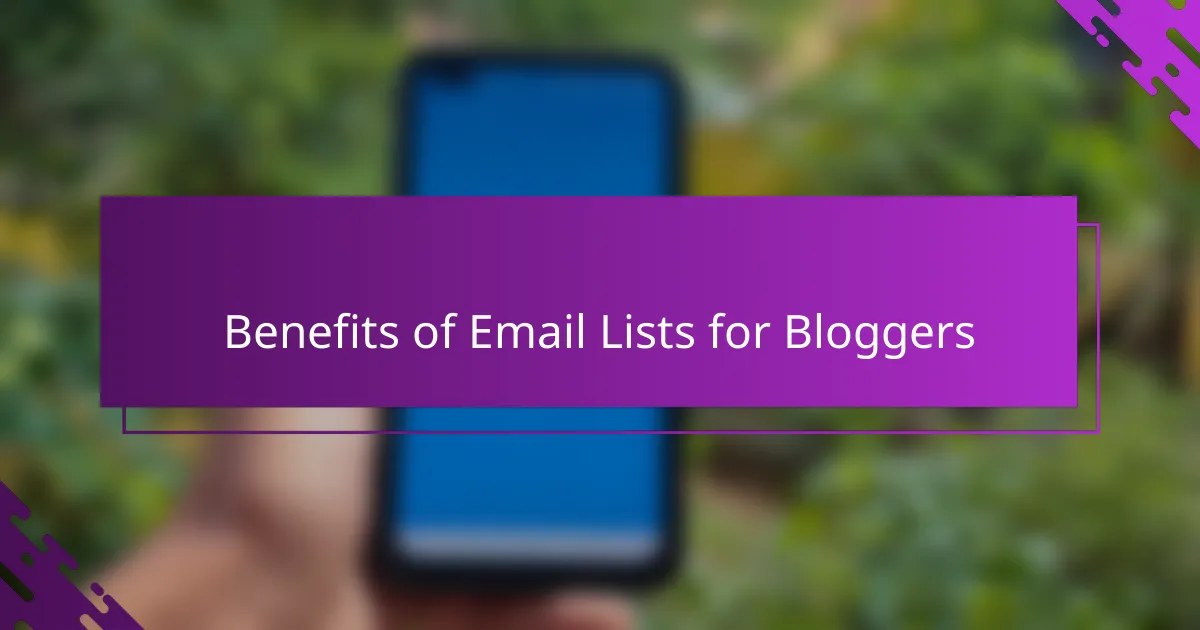
Benefits of Email Lists for Bloggers
What I find most rewarding about having an email list as a blogger is the sense of ownership it gives me over my audience. Unlike social media where algorithms decide who sees your posts, my emails go straight to people who actually want to hear from me. Have you ever felt frustrated when a post gets lost in the endless scroll? With an email list, that frustration fades away.
Another thing I noticed is how emails create a unique intimacy with readers. When someone opens my email, it feels like a personal invitation into my world. I remember the first time a subscriber responded directly to an email—I was thrilled to see that real connection forming. Isn’t it amazing when your readers become more than just numbers, but genuine relationships?
Lastly, email lists offer remarkable flexibility for bloggers like us. Whether I want to share a quick update, promote a new blog post, or announce a special event, I know my message will reach the right people. It feels empowering to have that control. Don’t you think having this direct line to your readers is a game-changer?
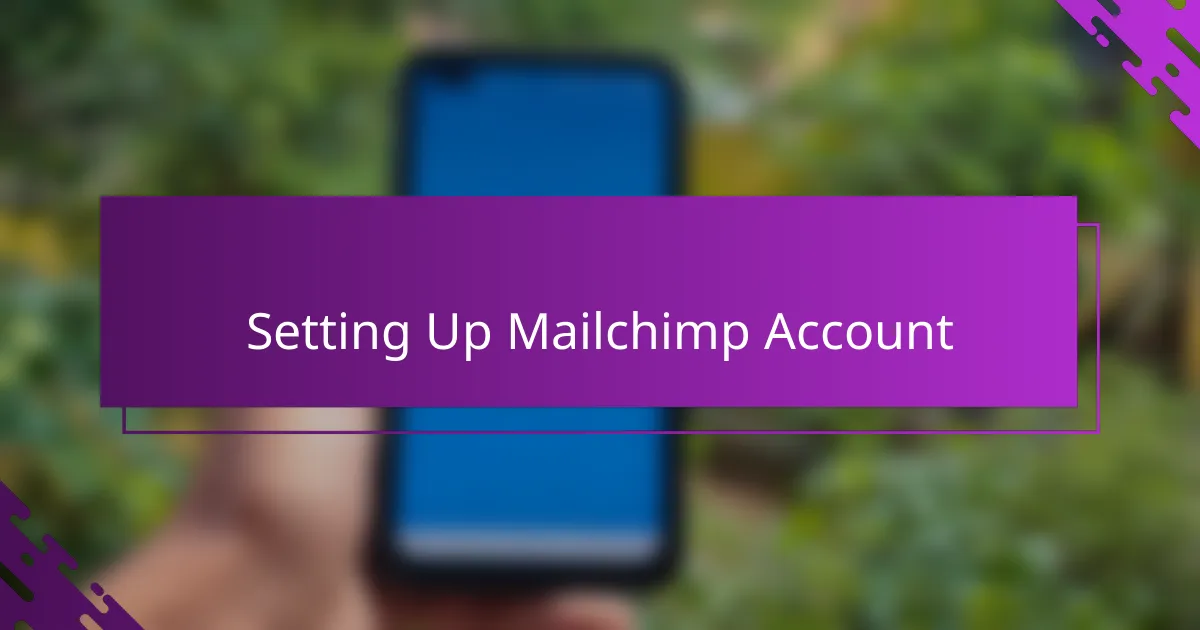
Setting Up Mailchimp Account
Setting up a Mailchimp account was surprisingly straightforward for me, which really helped lower the barrier to starting my email list. I simply followed the step-by-step prompts to enter basic info like my name, email, and blog details. Have you ever felt relieved when something techy turns out easier than expected? That’s exactly how I felt in this first step.
Once the basics were in place, I moved on to customizing my profile and adding a sign-up form. It felt great to see my brand’s personality start to take shape through Mailchimp’s templates and design options. Doesn’t it make you more excited about your email list when you can make it look and feel like your own?
I also appreciated how Mailchimp guided me through connecting with my website, which seemed daunting at first. But with their clear instructions, I managed to embed my sign-up form without a hitch. Have you ever had that satisfying moment when something clicks and you think, “I got this”? For me, that was a real confidence booster early on.
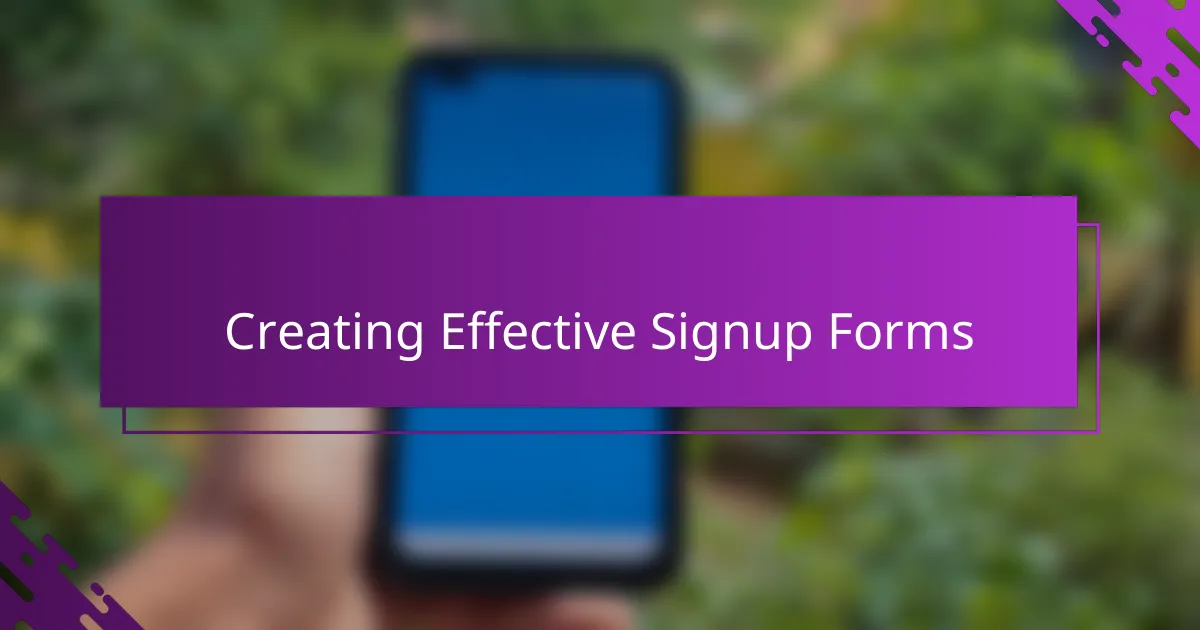
Creating Effective Signup Forms
Creating signup forms that actually work isn’t just about slapping a box on your page. I realized early on that simplicity paired with clear, inviting language makes a huge difference. Have you ever stumbled over a form asking for too much info and just closed the tab? That’s exactly what I want to avoid.
One thing that helped me was keeping the form fields minimal—usually just an email address and maybe a first name. This small step lowered the barrier so more people felt comfortable signing up. It’s funny how cutting down on questions can actually build trust rather than make you feel suspicious, don’t you think?
Design also plays a subtle but powerful role. I like to match the signup form’s colors and fonts with my blog’s style, making it feel like a natural part of the space rather than an intrusive pop-up. When the form feels good to look at, I noticed more people don’t hesitate—they just enter their email and hit submit. Have you noticed that too?
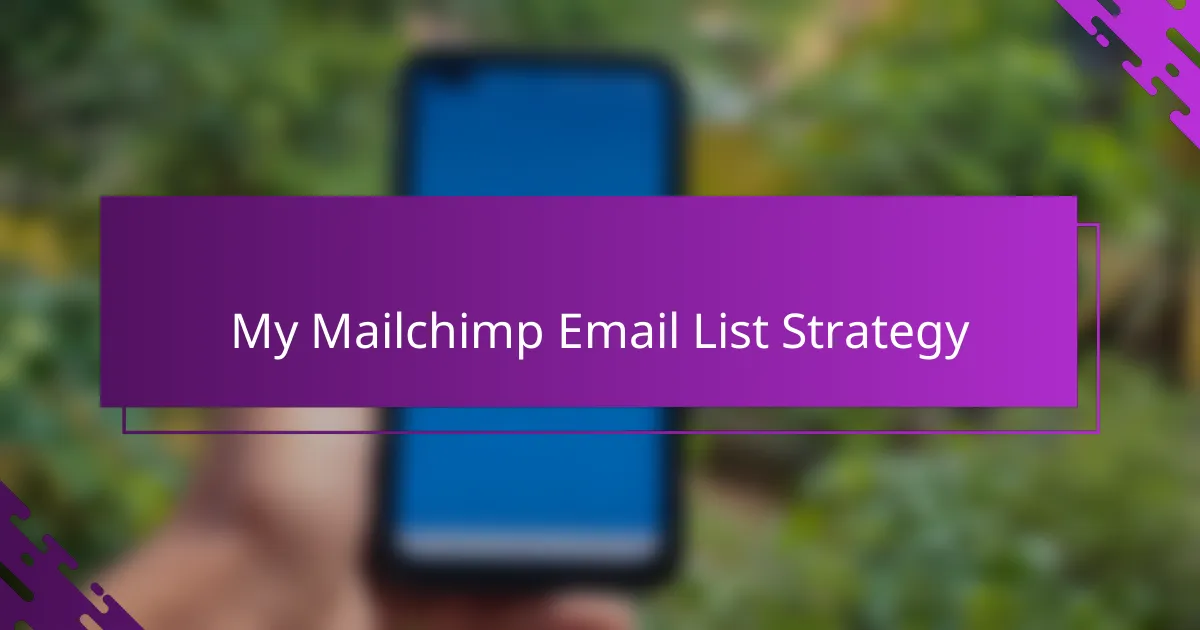
My Mailchimp Email List Strategy
When I first crafted my Mailchimp email list strategy, I focused heavily on segmentation. It felt intuitive to categorize subscribers based on their interests or how they found my blog. Have you ever noticed how receiving emails tailored just for you makes that message feel more special? That’s exactly what I aimed to create—a feeling of relevance and personal connection.
Another key part of my approach was setting up automated welcome emails. I wanted new subscribers to feel warmly greeted without me needing to send a manual note each time. The moment I saw an immediate open and reply to that first automation, I realized how powerful this simple investment of time truly was. Doesn’t it make you appreciate tools that handle the repetitive tasks, so you can focus on meaningful engagement?
Lastly, I make it a habit to review campaign reports regularly in Mailchimp. It’s fascinating how tiny tweaks—like adjusting subject lines or sending times—can dramatically improve open rates. I wonder, have you ever been surprised by insights hidden in what looks like just data? For me, these stats turned into a conversation with my readers, guiding me to deliver what they genuinely want.
